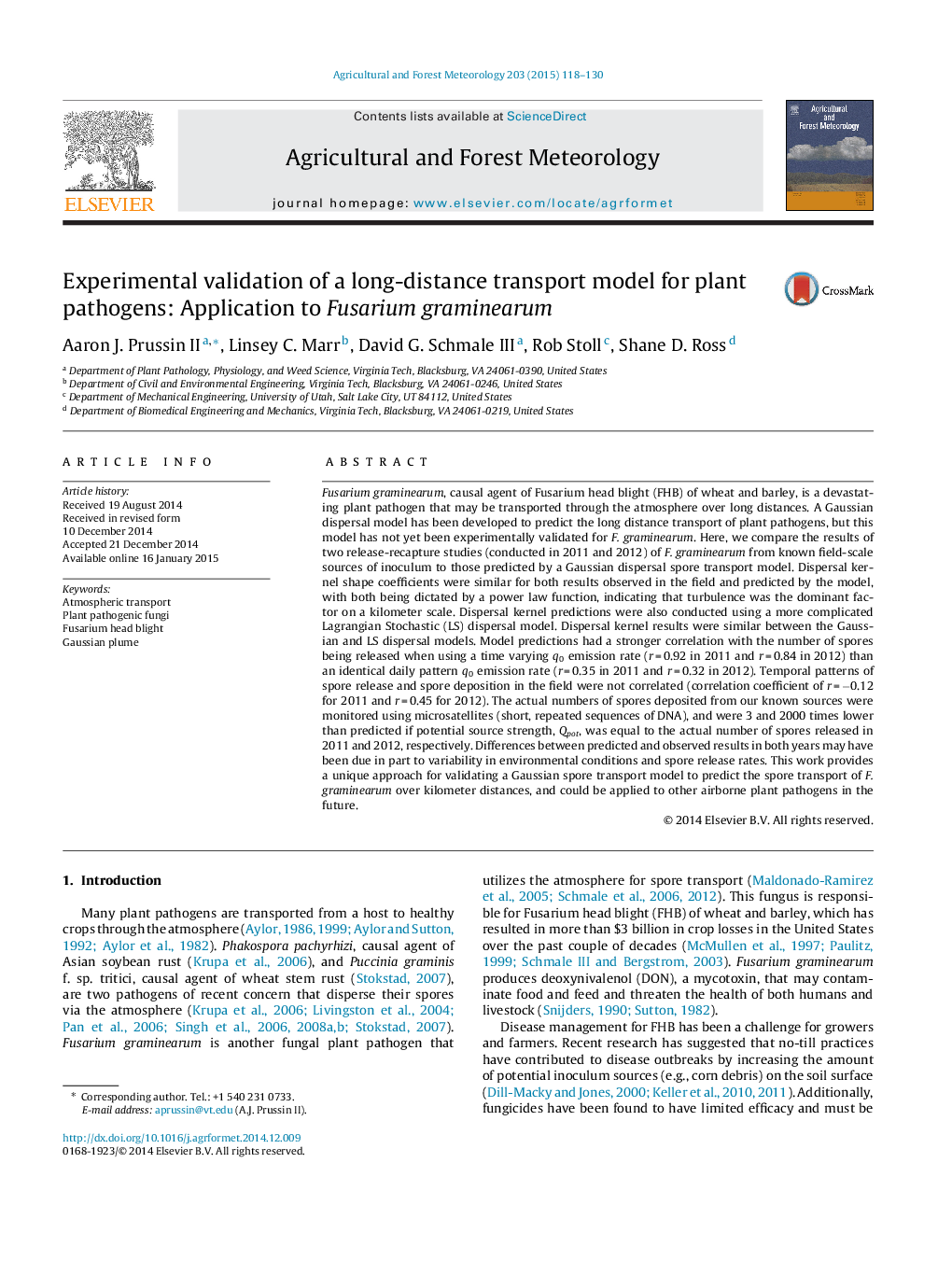| کد مقاله | کد نشریه | سال انتشار | مقاله انگلیسی | نسخه تمام متن |
|---|---|---|---|---|
| 6537362 | 158331 | 2015 | 13 صفحه PDF | دانلود رایگان |
عنوان انگلیسی مقاله ISI
Experimental validation of a long-distance transport model for plant pathogens: Application to Fusarium graminearum
دانلود مقاله + سفارش ترجمه
دانلود مقاله ISI انگلیسی
رایگان برای ایرانیان
کلمات کلیدی
موضوعات مرتبط
مهندسی و علوم پایه
علوم زمین و سیارات
علم هواشناسی
پیش نمایش صفحه اول مقاله

چکیده انگلیسی
Fusarium graminearum, causal agent of Fusarium head blight (FHB) of wheat and barley, is a devastating plant pathogen that may be transported through the atmosphere over long distances. A Gaussian dispersal model has been developed to predict the long distance transport of plant pathogens, but this model has not yet been experimentally validated for F. graminearum. Here, we compare the results of two release-recapture studies (conducted in 2011 and 2012) of F. graminearum from known field-scale sources of inoculum to those predicted by a Gaussian dispersal spore transport model. Dispersal kernel shape coefficients were similar for both results observed in the field and predicted by the model, with both being dictated by a power law function, indicating that turbulence was the dominant factor on a kilometer scale. Dispersal kernel predictions were also conducted using a more complicated Lagrangian Stochastic (LS) dispersal model. Dispersal kernel results were similar between the Gaussian and LS dispersal models. Model predictions had a stronger correlation with the number of spores being released when using a time varying q0 emission rate (r = 0.92 in 2011 and r = 0.84 in 2012) than an identical daily pattern q0 emission rate (r = 0.35 in 2011 and r = 0.32 in 2012). Temporal patterns of spore release and spore deposition in the field were not correlated (correlation coefficient of r = â0.12 for 2011 and r = 0.45 for 2012). The actual numbers of spores deposited from our known sources were monitored using microsatellites (short, repeated sequences of DNA), and were 3 and 2000 times lower than predicted if potential source strength, Qpot, was equal to the actual number of spores released in 2011 and 2012, respectively. Differences between predicted and observed results in both years may have been due in part to variability in environmental conditions and spore release rates. This work provides a unique approach for validating a Gaussian spore transport model to predict the spore transport of F. graminearum over kilometer distances, and could be applied to other airborne plant pathogens in the future.
ناشر
Database: Elsevier - ScienceDirect (ساینس دایرکت)
Journal: Agricultural and Forest Meteorology - Volume 203, 15 April 2015, Pages 118-130
Journal: Agricultural and Forest Meteorology - Volume 203, 15 April 2015, Pages 118-130
نویسندگان
Aaron J. II, Linsey C. Marr, David G. III, Rob Stoll, Shane D. Ross,